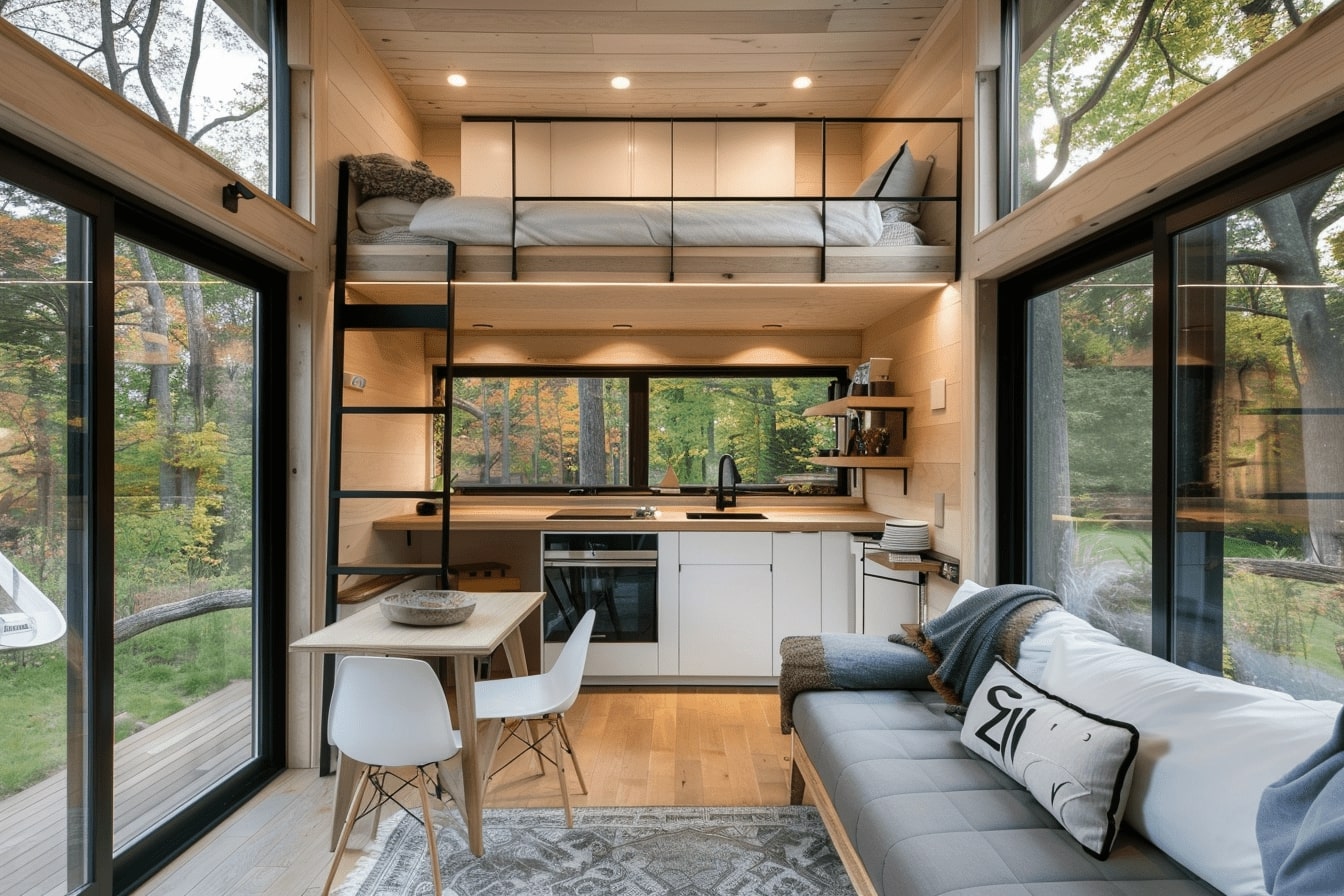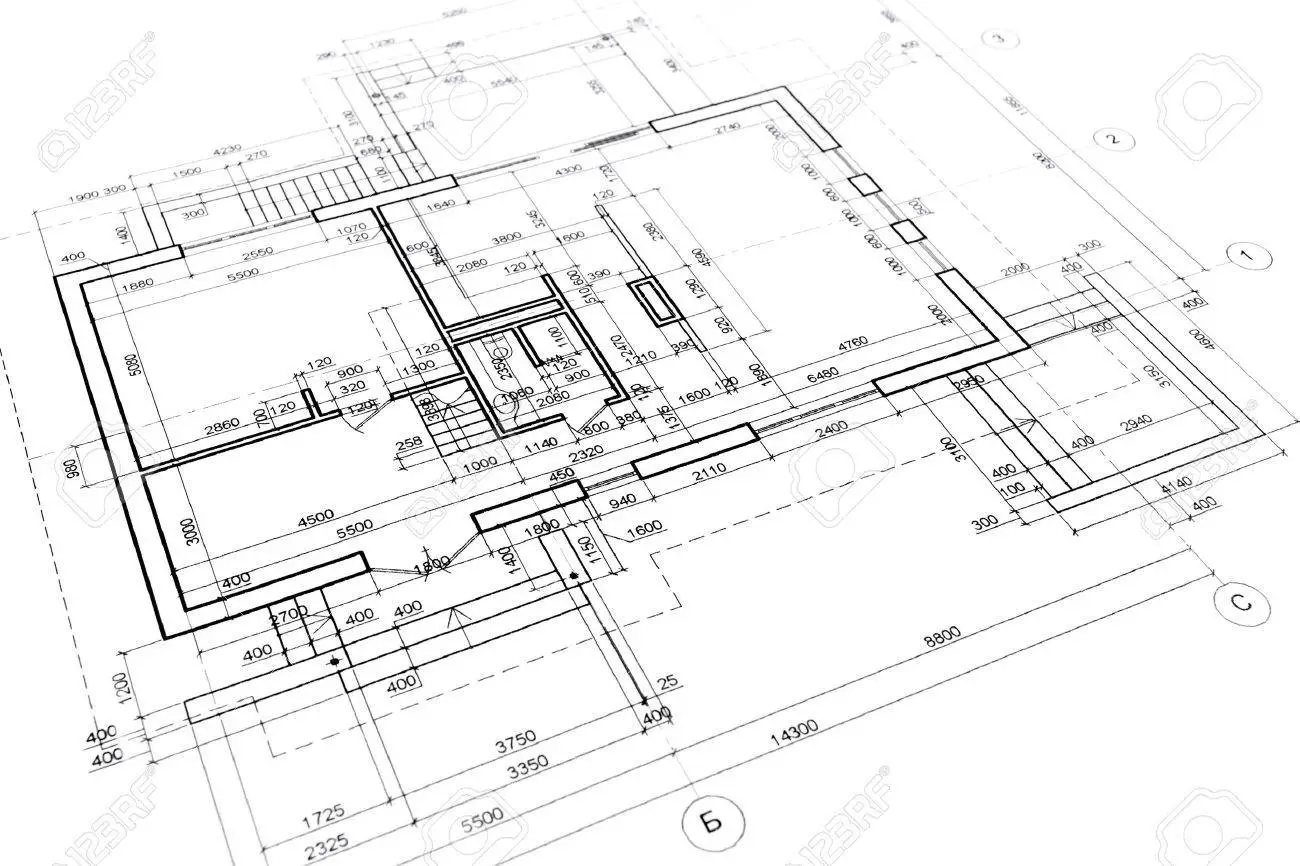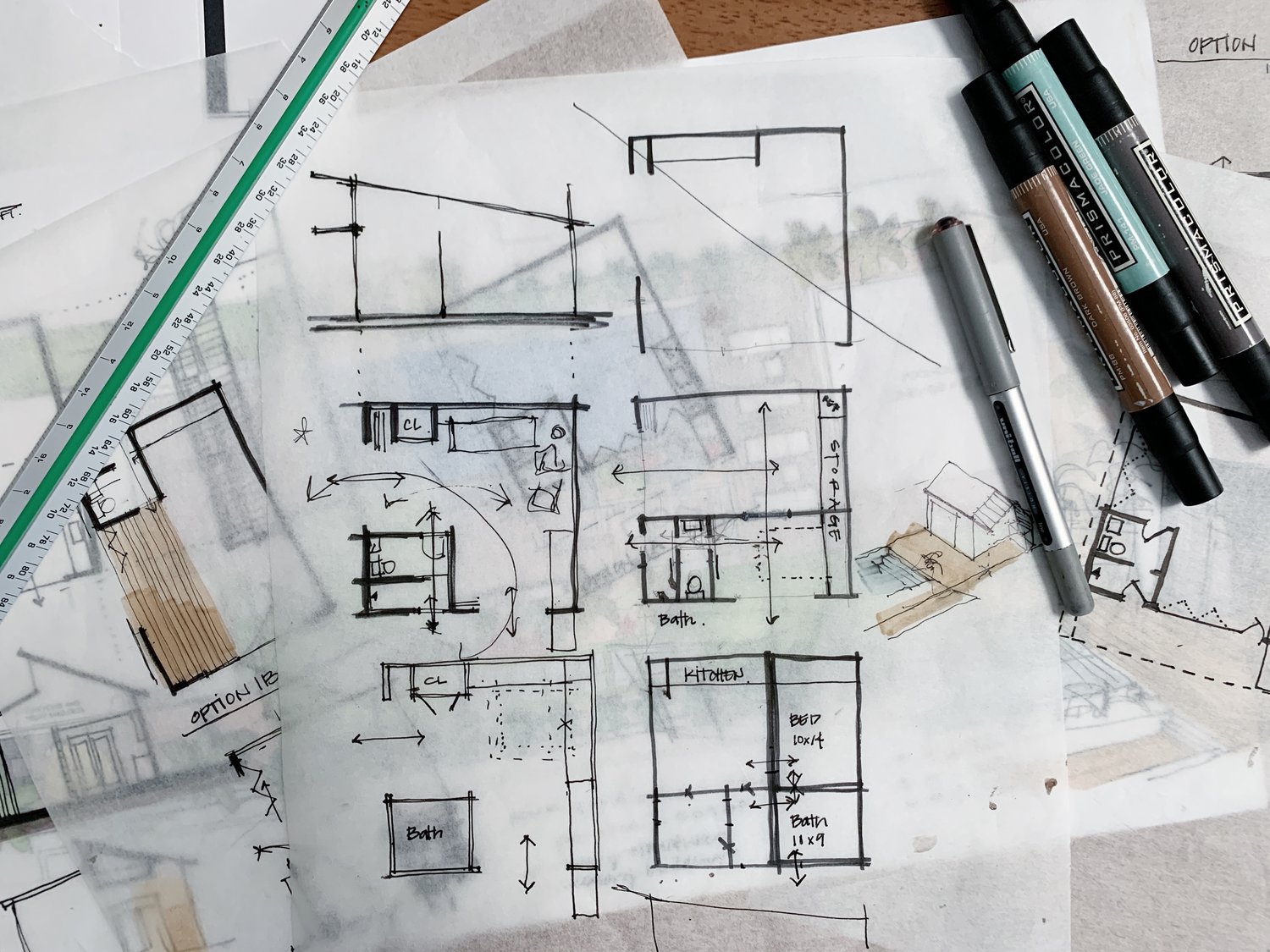In recent years, the tiny house movement has taken the USA by storm, capturing our imaginations with its promise of simplicity and sustainability. As more of us seek to downsize and declutter our lives, these compact homes offer a unique solution that balances practicality with a minimalist lifestyle. But what’s driving this growing trend, and why are so many Americans choosing to live in spaces often smaller than a typical garage?
Let’s delve into the allure of tiny houses and explore how they’re reshaping our ideas about home and community. From financial freedom to environmental impact, the benefits of tiny living are as diverse as they are compelling. Join us as we uncover the reasons behind this fascinating movement and how it’s influencing the way we think about our living spaces.
Discover the Top Tiny House Communities to Consider in the USA

Understanding the Tiny House Movement
The tiny house movement draws people seeking simplicity and sustainability. It’s a growing trend that emphasizes minimalism and thoughtful living.
What Is a Tiny House?
A tiny house is a small dwelling, typically under 400 square feet. These homes are designed to maximize space efficiency and often feature multi-functional furniture. Most tiny houses are built on trailers, allowing mobility, while some are permanent structures on foundations. Tiny houses fulfill essential living needs with a minimal footprint, often incorporating off-grid solutions like solar panels.
Step-by-Step Guide on How to Build Your Own Tiny House in the USA
The Appeal of Tiny Living
Tiny living offers numerous advantages. It promotes financial freedom, as tiny houses cost significantly less to build and maintain compared to traditional homes. For instance, the average cost of a tiny house is around $30,000 to $60,000, while the average cost of a traditional home is over $300,000. Tiny houses also encourage a minimalist lifestyle, reducing clutter and unnecessary possessions. Environmentally, they have a smaller carbon footprint due to lower energy use and fewer materials in construction. Socially, tiny living fosters tight-knit communities as people often share resources and spaces.
The Growth of the Tiny House Movement in the USA
Tiny houses have gained significant traction in the USA due to their appeal in promoting a simpler and more sustainable lifestyle. Their rise can be attributed to various socio-economic and environmental factors.
Factors Driving the Popularity
Several factors contribute to the tiny house movement’s growing popularity:
- Affordability: Lower construction and maintenance costs attract those seeking financial freedom. A typical tiny house costs between $10,000 and $40,000, compared to the median price of a traditional home at approximately $320,000.
- Environmental Impact: Tiny houses use fewer resources, with many featuring solar panels and composting toilets, reducing the overall carbon footprint. For example, a growing number of tiny house owners in urban areas like London are opting for eco-friendly solutions such as installing a solar panel in London to harness clean energy. This not only contributes to reducing their environmental impact but also lowers their energy costs significantly. With London leading the way in sustainable living initiatives, the integration of solar energy in tiny homes is becoming a key factor in the movement’s appeal.
- Lifestyle Changes: A desire for simpler, clutter-free living encourages individuals to downsize. Tiny homes force efficient use of space.
- Community Focus: Owners of tiny houses often find community through shared resources and close-knit living environments.

Regional Trends and Examples
The tiny house movement shows distinct regional trends across the USA:
- West Coast: California and Oregon see a high concentration of tiny houses, driven by high real estate costs and a strong focus on environmental sustainability.
- Southern States: In Texas and North Carolina, more people opt for tiny living to avoid large mortgages while capitalizing on wide-open spaces.
- Urban Areas: Cities like Portland, Seattle, and Austin have established tiny house communities, fostering a shared living philosophy and environment-friendly initiatives.
These regional examples illustrate the diverse ways tiny houses are adapted to fit different lifestyles and locations across the country.
Benefits of Tiny House Living
Tiny house living offers numerous advantages that attract diverse groups of people across the United States.
Environmental and Economic Benefits
Tiny houses significantly reduce our carbon footprint due to their small size, which requires fewer building materials and resources. Many incorporate eco-friendly features like solar panels, composting toilets, and rainwater collection systems. According to the Environmental Protection Agency (EPA), tiny homes can reduce energy consumption by up to 45% compared to traditional-sized homes.
Financially, tiny houses present a more affordable housing option. The average cost of a tiny house ranges from $30,000 to $60,000, compared to the median price of a traditional home in the USA, which is over $300,000. This price difference lowers mortgage debts and reduces overall maintenance expenses. Additionally, property taxes are minimal due to the smaller footprint of the dwelling.
Lifestyle and Freedom
Living in a tiny house promotes a simplified lifestyle. With less space to fill, we tend to adopt minimalism, prioritizing essential and meaningful possessions. This shift in mindset often leads to a more fulfilling and less cluttered life.
Tiny houses also provide unparalleled mobility. These homes can be mobile, allowing us to relocate without the burdens associated with moving a standard home. This flexibility fosters a sense of freedom and adventure, making it easier to explore different regions or live closer to nature.
Tiny house communities often have strong social bonds. Resource sharing and proximity foster a sense of community not always found in traditional neighborhoods. These aspects of tiny house living contribute to a sense of belonging and mutual support.

Challenges and Considerations
Understanding the challenges and considerations of the tiny house movement in the USA is crucial. This section will cover legal and zoning issues, as well as practical living challenges, to provide a comprehensive view.
Legal and Zoning Issues
Navigating legal and zoning issues presents significant challenges for tiny house owners. Local zoning laws often restrict where tiny houses can be parked or built. Many areas classify tiny houses as recreational vehicles (RVs), limiting them to RV parks or campgrounds. These restrictions can exclude tiny houses from residential neighborhoods. Some municipalities have begun adapting their codes to accommodate tiny houses, but progress remains inconsistent. Owners must thoroughly research local laws and regulations before deciding on a location.
Navigating the Legal Landscape of Tiny Houses in the USA: Key Challenges and Progress
Practical Living Challenges
Living in a tiny house requires adjusting to practical living challenges. Efficiently utilizing limited space involves innovative storage solutions and multi-functional furniture. For example, beds often have built-in storage or fold into walls to maximize space. Additionally, navigating extreme weather conditions in a small, often lightweight structure can be difficult. Tiny houses must be well-insulated and equipped with proper heating and cooling systems. Water and waste management can also become challenges, especially for off-grid homes. Solutions range from composting toilets to rainwater collection systems, each with its own maintenance needs and regulatory considerations.
Future Perspectives
The tiny house movement in the USA is evolving and adapting to various trends. Let’s delve into some key areas shaping its future.
Innovations in Tiny House Designs
Innovations are transforming tiny house designs, making them more functional and sustainable. Builders are using advanced materials like recycled steel and low-VOC paints. Energy-efficient solutions now include solar roofs and rainwater harvesting systems. Multi-functional furniture maximizes space; for instance, foldable beds and retractable tables. Smart technology integration is rising, with features like home automation systems for lighting, security, and climate control.
How to Build a Tiny House: A Detailed Step-by-Step Guide

Predictions for the Movement’s Growth
The tiny house market is projected to grow notably. According to Prophecy Market Insights, the tiny homes market is expected to reach $5.8 billion by 2025. Millennials and retirees show the highest interest, driven by affordability and mobility. Regulations may evolve favorably as cities experiment with zoning laws to accommodate tiny houses. Tiny house communities are likely to expand, promoting a shared economy and sustainable living practices.
By recognizing these future perspectives, we can see the tiny house movement continues to advocate for a sustainable, minimalist lifestyle. This trend is not only about living small but about living more intentionally and sustainably.
Conclusion
The tiny house movement in the USA continues gaining traction, driven by a desire for simplicity, sustainability, and community. As we explore this trend, we witness the convergence of financial freedom and minimalistic living. Tiny houses, typically under 400 square feet, represent efficiency and sustainable solutions like solar power and rainwater collection systems.
Looking at regional trends, the movement’s appeal varies across the country. Coastal areas often emphasize environmental benefits, while inland regions focus more on affordability and mobility. Challenges such as zoning laws and practical living concerns persist, yet innovation in design methods offers promising solutions.
Future perspectives indicate sustained growth for the movement. Millennials and retirees are particularly attracted to the lifestyle benefits tiny homes provide. Expected expansions in tiny house communities aim to support shared economies and sustainable practices. This trend signifies a broader shift towards intentional living and sustainability, likely influencing housing trends for years to come.
Join us as we continue to monitor and participate in the evolving landscape of the tiny house movement, shaping a future that values simplicity, innovation, and environmental stewardship.








Sleek and sharp looking! Great job
I’m thinking I’d love a tiny house as my second home away from home as it would be more affordable & upkeep could be kept to a minimum.
This is very good article, thank you so much for publishing it.
Good article. Just bought a tiny house on wheels. Will be living in the largest tiny house community in the US. Only paying $200 a month in lot fees.
Where is the community? I’ve not heard of that low of a lot fee
Where is the largest tiny house community?
Where is that?
What is the best method when anchoring a tiny home? How does a tiny home fair during strong winds and heavy rain?
Who wants to climb down the ladder if they need to use the bathroom in the middle of the night.
I think tiny houses are interesting. They seem to save money and space.
Tiny houses sound good for some people. I wonder if they would work for me.
The tiny house idea is okay. It might help with less clutter and costs.
I have low cost monthly fees, in Texas, on my private ranch, and you can purchase a basic real cabin kit from me for under $6,000.